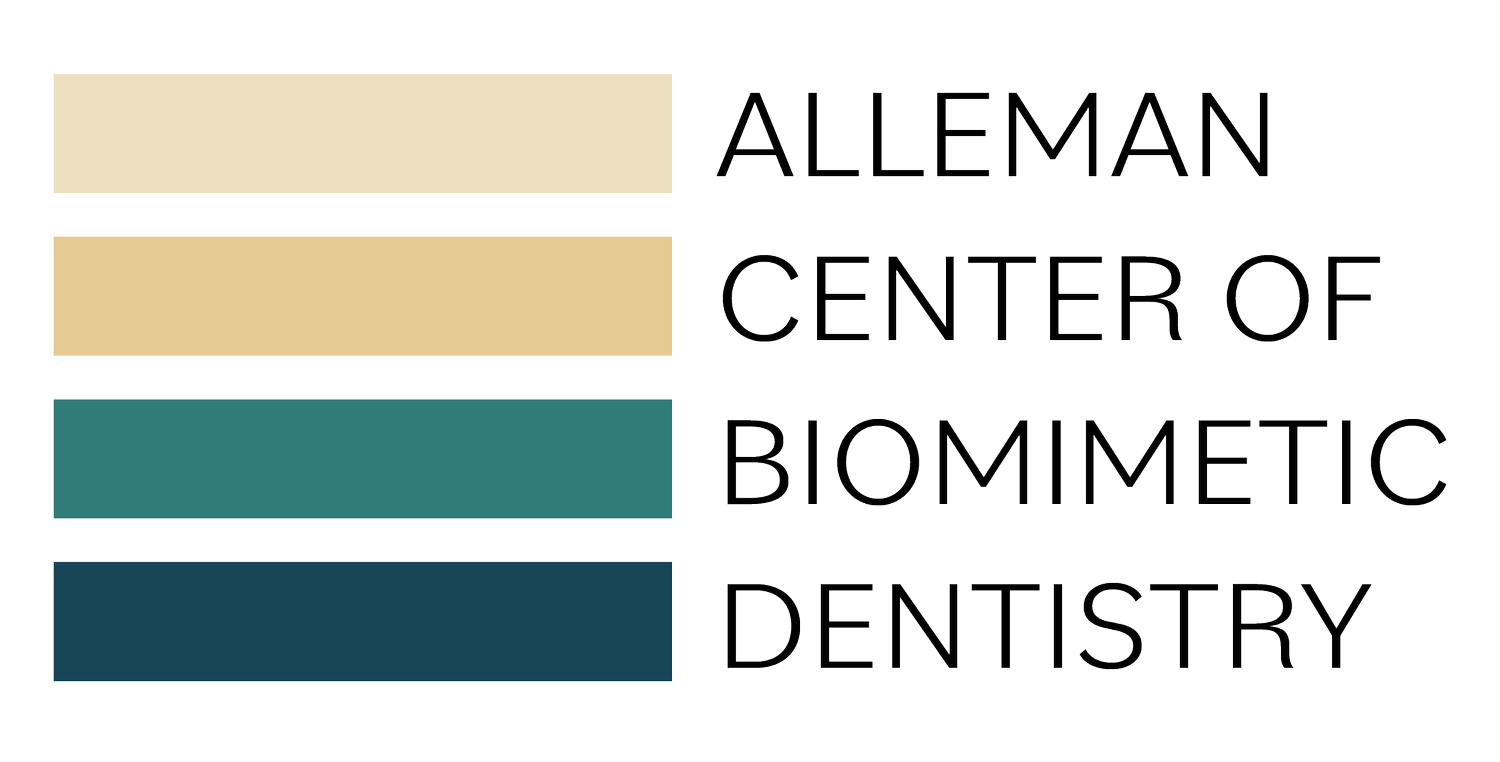How to Choose an Enamel Replacement
“What do you use for your enamel replacement?” is one of the most common questions we hear at the Alleman Center. While this is a common question, it is actually one of the least important factors when determining the long-term success of a restoration. In this article, read more on how to pick an enamel replacement that benefits the tooth’s long-term function while creating a restorative foundation that protects the tooth’s vitality, allowing your enamel replacement to last for decades.
Quadrant with composite onlays and inlays. Case by Dr. Davey Alleman, DMD.
What is enamel replacement?
Enamel replacement refers to the materials used to restore the occlusal top of a dental restoration. In biomimetic restorative dentistry, this step follows the biobase, which serves as the dentin replacement. Biomimetic dentistry allows for advanced adhesive bonding to dentin, so preparations are defect driven and do not require retention. This gives practitioners more flexibility when treating deep defects and conserves tooth structure that is essential to natural function during occlusion. Once the biobase is complete, enamel replacement is guided by practitioner and patient preferences.
Direct composite restorations are easy to customize to the tooth’s pathologies, as shown in this case by Dr. Davey Alleman, DMD.
Composite vs ceramic enamel replacements
Ceramic is often marketed as the superior enamel replacement, but the answer is more complex than that. While ceramic lasts longer without wear than composite, practitioners should also consider where the ceramic restoration is in the arch, the amount of tooth structure that needs to be removed to accommodate the ceramic onlay and how teeth contacting the ceramic will be affected. In many instances, composite can be a more conservative option. Understanding how to use both composite and ceramic enamel replacements to maximize the benefit to the patient’s long-term health is an essential tool for every restorative dentist.
Stress-reduced direct composite is the preferred enamel replacement option for structurally compromised teeth, as shown in this case by Dr. David Alleman, DDS.
Composite enamel replacement
Composite enamel replacement offers additional flexibility for practitioners, with onlays that can be made chairside, direct or semi-direct to reduce treatment time and cost for the patient. Composite is also used in stress-reduced direct composite restorations, which support structurally compromised teeth. While composite will wear over time more than ceramic, composite creates less occlusal wear on the opposing tooth or restoration and can be more easily repaired than ceramic.
For cosmetic cases, composite can be entirely additive, without needing to remove existing tooth structure to make place for the restorative material. This conserves a patient’s healthy tooth structure, while meeting their aesthetic goals.
Here are 8-year and 20-year recall photos from a case originally treated in 2004 by Dr. David Alleman, DDS. While some wear is visible in the composite, this is easily corrected with routine polishing and adding more material for proper occlusal function. The healthy tooth structure underneath the restoration remains vital and asympomatic.
Ceramic enamel replacement
Ceramic enamel replacements are long-lasting and aesthetic, and, as in-office scanners and milling machines become more widely available, ceramic is becoming a more common enamel replacement for everyday restorative dentistry.
Ceramic is best used for enamel replacement where the opposite tooth is also restored with ceramic, as the enamel replacement will cause some wear of natural enamel. Thorough polishing for a smooth surface can minimize wearing on natural teeth. The thickness of ceramic is also critical and must be monitored. Too thin, and the ceramic restorative material may crack.
Biobase and e-max overlay. Case by Dr. Davey Alleman, DMD.
Creating the best foundation for your enamel replacement
Why are questions about enamel replacement some of least important questions when determining the long-term outcome of a dental restoration? Your enamel replacement will not improve patient outcomes if you have:
A poor bond to dentin
Unsealed decay under the restoration
These three factors can lead to biologic failures, which would require removal of your enamel replacement and retreatment, or, in severe cases, catastrophic failure and tooth loss.
This case by Dr. Davey Alleman, DMD shows the steps to create a healthy and functional restorative foundation. Without that, the enamel replacement will not improve the case’s outcome.
When Dr. David Alleman created his Six Lessons Approach to Biomimetic Restorative Dentistry, he built the restorative protocols into a hierarchy, with Lesson 1: Diagnosis and Treatment of Caries being the most important. Lesson 5: Biomimetic Prep Design and Enamel Replacement is one of the least important. It still impacts the restorative outcome, but without a foundation that connects the tooth side-to-side, front-to-back and top-to-bottom, restored teeth are at greater risk of failure.
In Alleman Center dental continuing education programs, we teach doctors how to select enamel replacement materials and protocols that best protect a tooth’s long-term health and conserve essential tooth structure. Learn more about our upcoming biomimetic dentistry training programs.
Learn more about selecting an enamel replacement in this Six Lessons Approach Podcast episode.






















